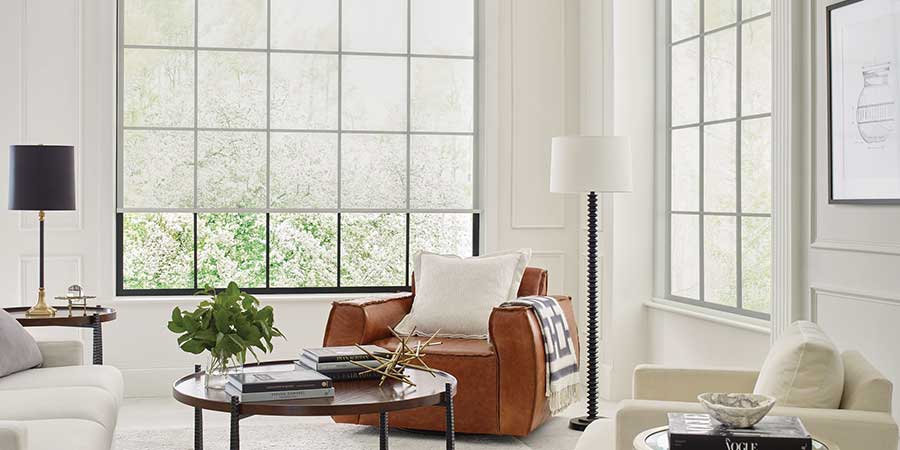When you’re in the process of replacing your windows, it doesn’t take long to realize that it’s a big decision. From the wide range of options to the overall expense, it’s easy to feel overwhelmed. That’s where we come in. Our team is here to simplify the process by focusing on the main considerations when choosing new windows. Let’s break it down and help you feel confident every step of the way.
What to Consider
A great place to start is to take a step back and organize your thoughts. This will allow you to prioritize what is important to you easily instead of feeling overwhelmed by the sea of decisions. Let’s focus on the key topics of window functionality, their benefits, and the design elements that make the biggest impact in your home.
Adjustable Windows vs. Fixed Windows
Ask yourself: Do I have adjustable windows or fixed windows? For context, fixed windows are stationary. They do not open. They are predominately meant to show off the view and allow natural light to flood in. Now, adjustable windows open up to bring in the fresh air. However, they can be more costly. The benefits of them include fresh air, safety features, and cleaning maintenance. This is especially important for second-floor bedrooms. When you’re looking for the best windows for your first floor, think about seasonable allergies. You may not want to spare the expense for an adjustable design if this is something your family struggles with.
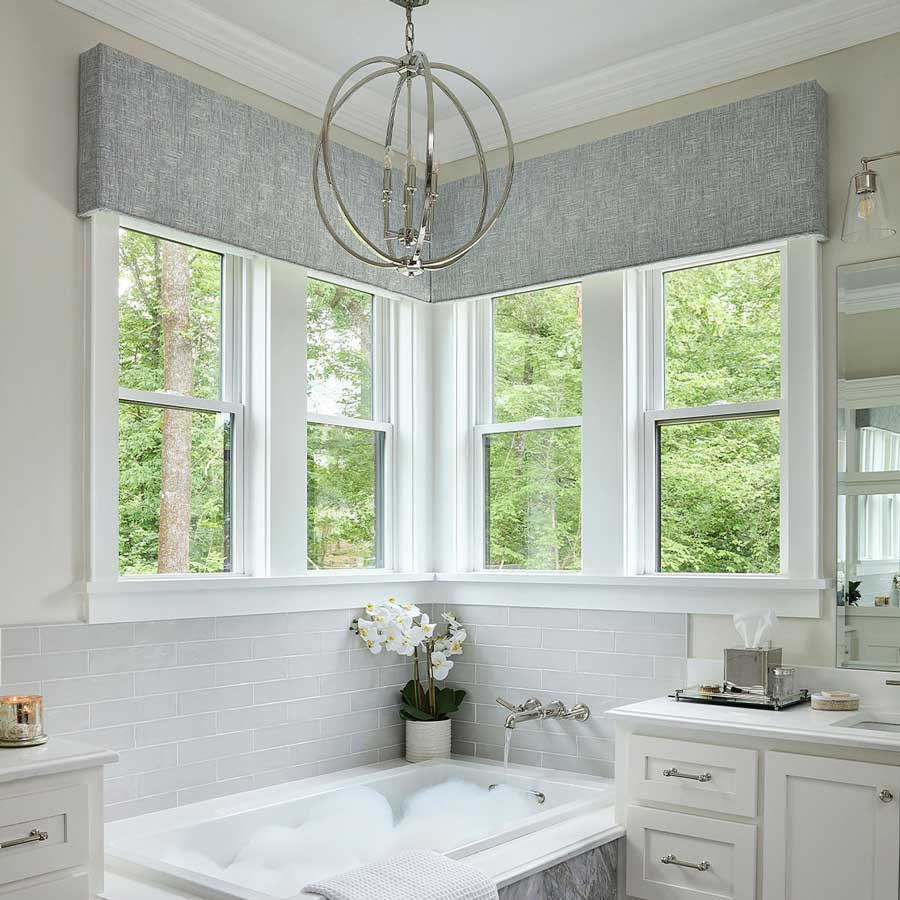
Single and Double Hung Windows
In a home, you will most likely see single and double-hung windows in bedrooms. They have child safety features and are easy to open. The only difference between the two options is how they open. Single-hung windows only open with the bottom portion. This is ideal if you want to encourage airflow in your space. It does have its challenges though. They can be more difficult to clean. Double-hung windows offer adjustment to the top and bottom portions of glass.
Casement Windows
Casement windows are a great option for first-floor windows and are popular as well. This style has a crank handle. Not only do they appear to be fixed to show off the view, but they open for airflow. If you are choosing new windows and are interested in this style, they can stay close to a lowered position. Even better, the windows can be opened.
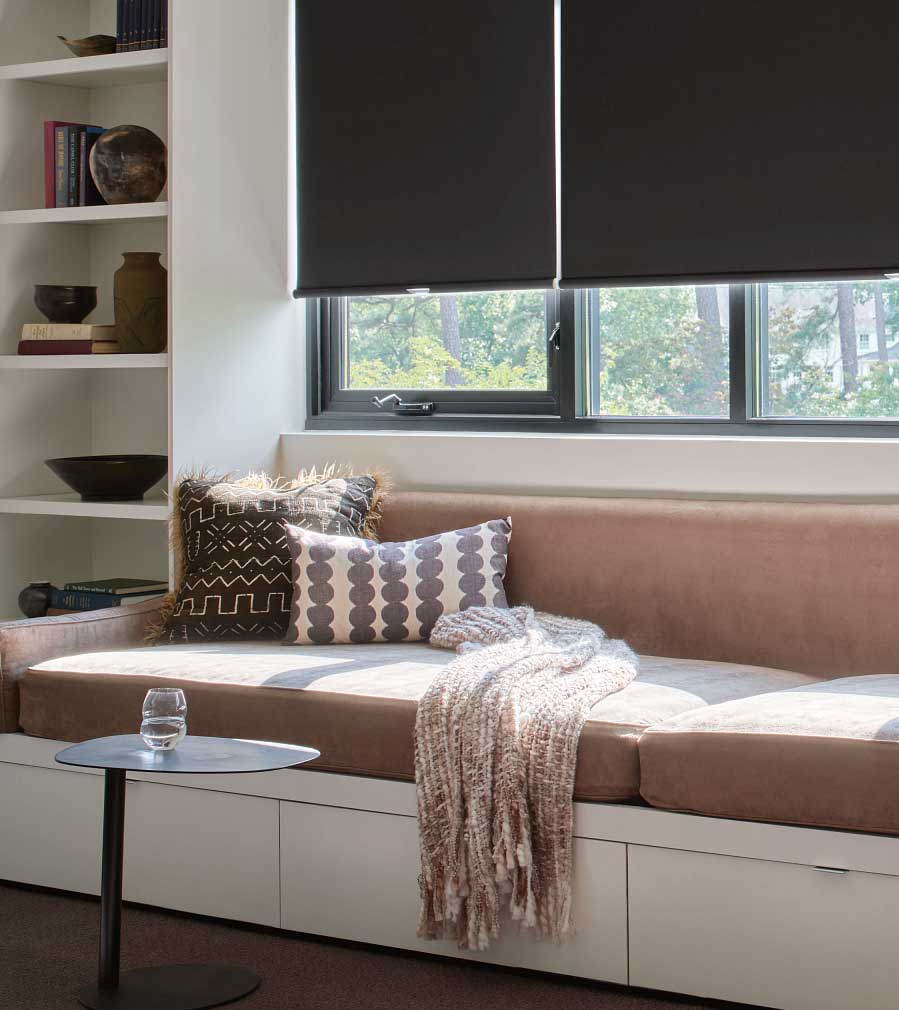
Sliding and Folding Windows
Like casement windows, sliding and folding windows offer a sleek, unobstructed look that maximizes natural light and highlights the view. They often resemble fixed windows when closed. However, they slide or fold to the side, allowing fresh air to flow in when opened. One consideration for homeowners is maintenance: Dirt and debris can collect in the tracks or hinges, affecting both the appearance and ease of operation over time.
Tilt Turn Windows
Tilt-turn windows are beloved for their versatility. They can swing open like a door or tilt inward at the top for gentle ventilation. This dual-function design makes it easy to gain access to fresh air and simple cleaning. Controlling light and privacy has historically been tricky with this window style. That changed when Hunter Douglas introduced TrackGlide®. This innovative narrow track adheres seamlessly to the window frame, allowing the shades to move with the window itself. The result is effortless light control, enhanced privacy, and improved energy efficiency.
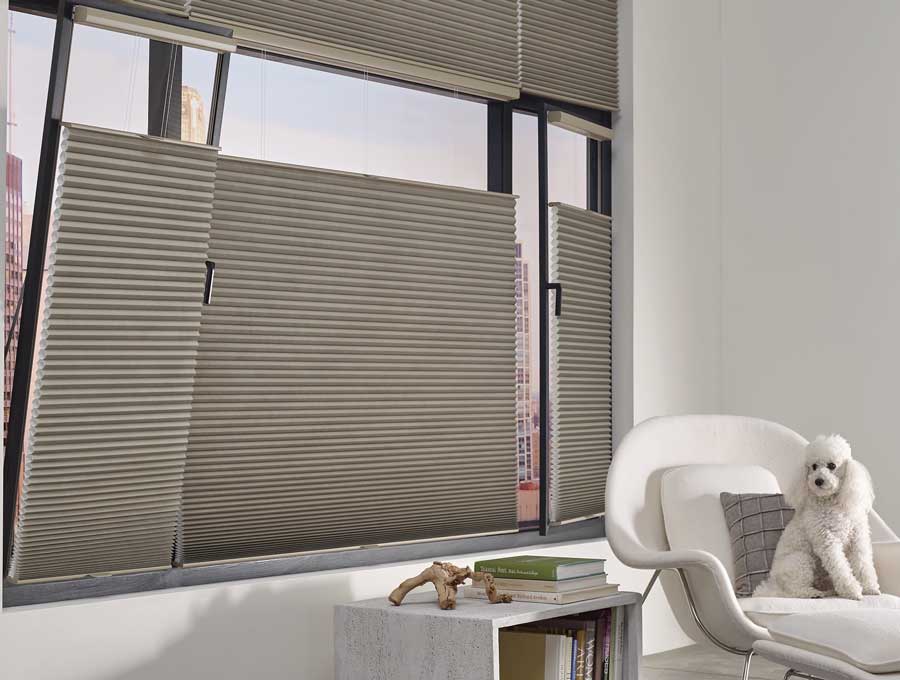
The Functional Benefits of Windows
Windows flood our homes with natural light and frame beautiful views of the outdoors. Even when closed, they create a sense of openness and airiness in any room. Beyond aesthetics, windows also play a crucial role in safety, especially on upper levels, serving as potential emergency exits during house fires or flash floods.
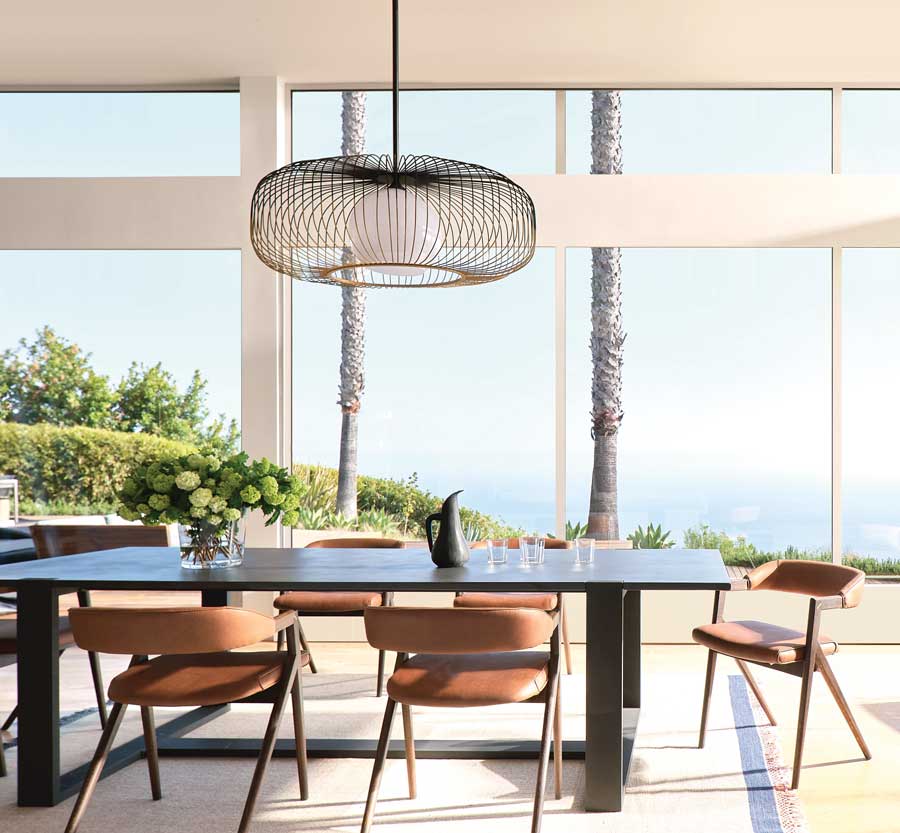
But while sunlight is welcome, too much of it can cause rooms to overheat, making them uncomfortable. In these cases, operable windows can provide much-needed ventilation to reduce radiant heat. Pairing them with energy-efficient window treatments adds another layer of temperature control, helping to keep your home cool, comfortable, and protected from the elements.
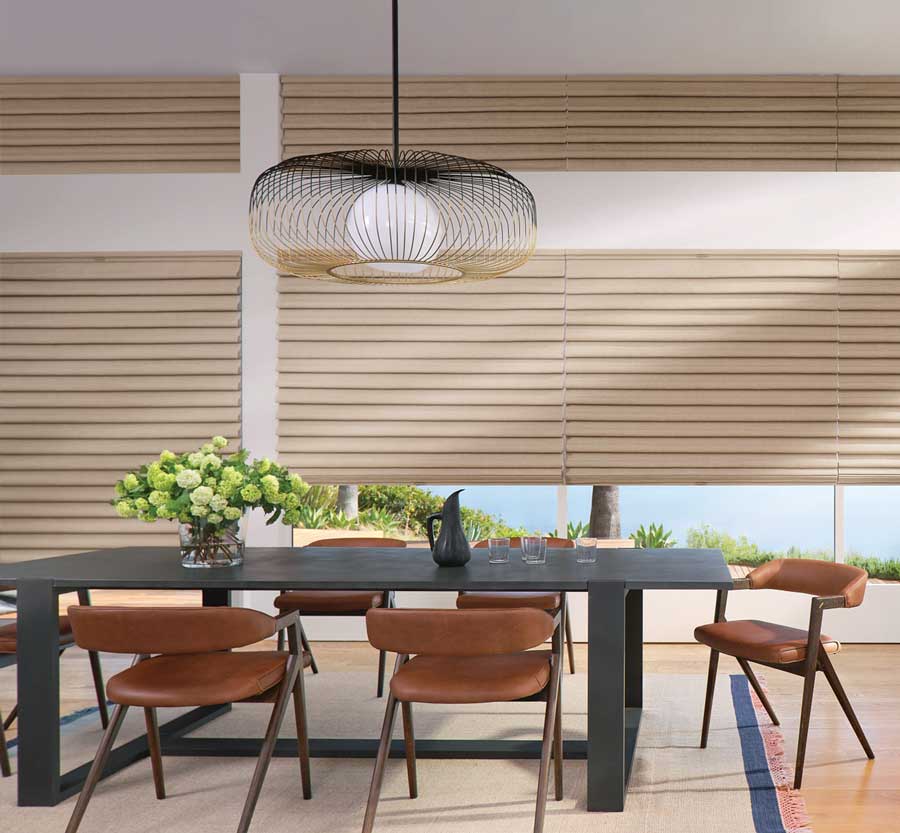
The Designer Details
While functionality should be the top priority when selecting new windows, there’s no denying their influence on your home’s overall look and feel. Two key choices that let you personalize your design are the color scheme and window grilles. These elements offer a chance to showcase your style and elevate the visual appeal of your space.
Window Grids
You can keep your windows bare for a clean, modern look or add window grilles (also known as grids) for a touch of architectural detail. Grille patterns range from classic boxes, to off-set patterns that might better suit your aesthetic. Just keep in mind: The pattern you choose can impact the view, especially in smaller windows where visual interruptions are more noticeable.
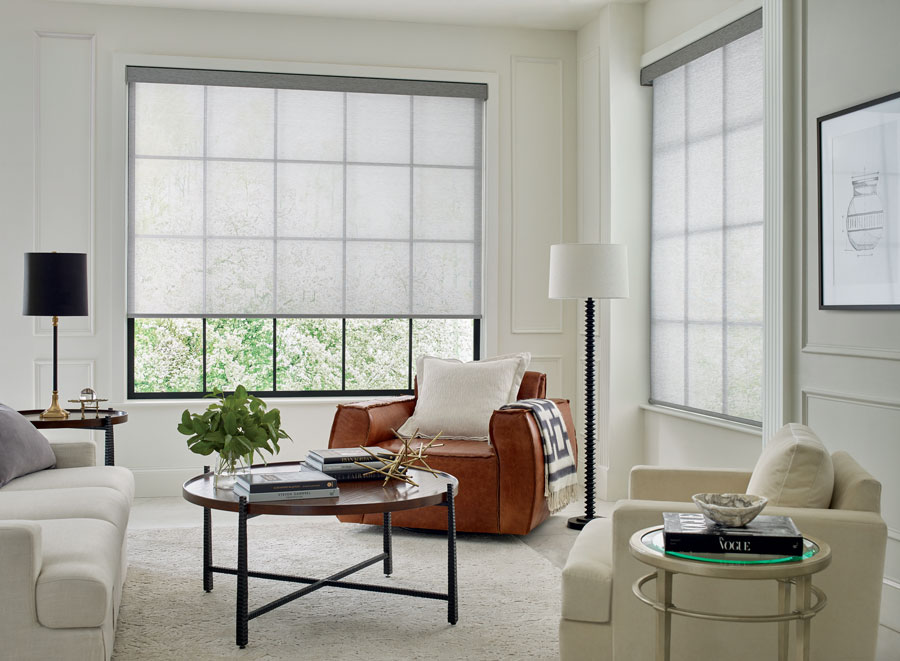
The Color Scheme
When choosing new windows, the color scheme plays a major role in defining your home’s overall aesthetic. White window frames remain a classic, versatile choice that continues to be a favorite for their clean and timeless appeal. For a bold, modern touch, black-trimmed windows bring a contemporary edge. However, they come with a higher price tag. If you prefer a warm, traditional feel, a woodgrain finish offers rich character and charm that complements more classic interiors.
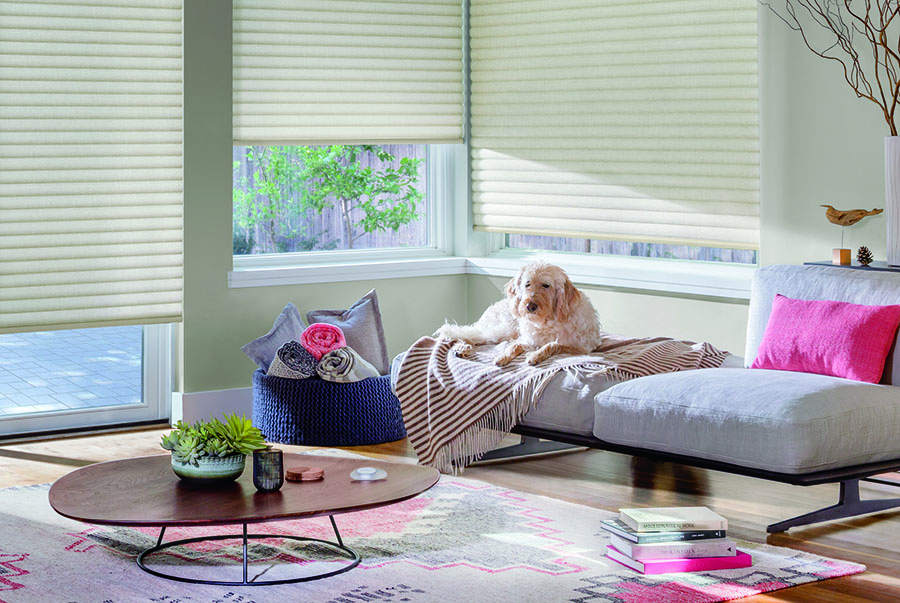
Ready for Window Coverings?
Choosing new windows is a big decision. Window coverings are the finishing touch, and we’re here to help you get them just right. We’ll guide you to the ideal shades, blinds, shutters, or drapery that not only enhance your space but also offer light control, privacy, and energy efficiency. Contact us today to get started.

